Interview: Denise J Reytan
The Berlin artist’s “wearable collages” mix vivid colors, silicone, precious gems and more
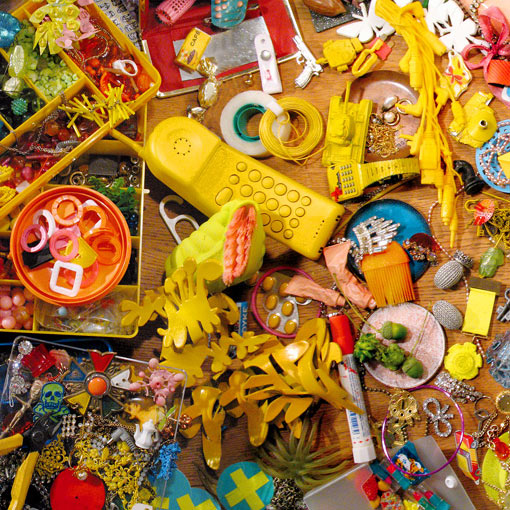
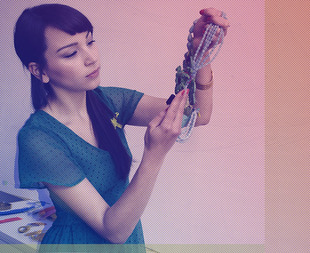
While many jewelry designers stick to classics like gold, silver and semi-precious stones, Denise J Reytan builds her “wearable collages” from the most unusual colors and materials. Silicone, textiles and even custom-casted plastic objects are juxtaposed together in necklaces and bracelets, and the results are not outlandish or gaudy, but instead uniquely graceful. More conceptual pieces of art, Reytan’s accessories are equally sought after by museums, magazines and boutiques alike. We spoke with the Berlin-based artist to learn about her handmade process, her attraction to vivid colors and working with plastic.
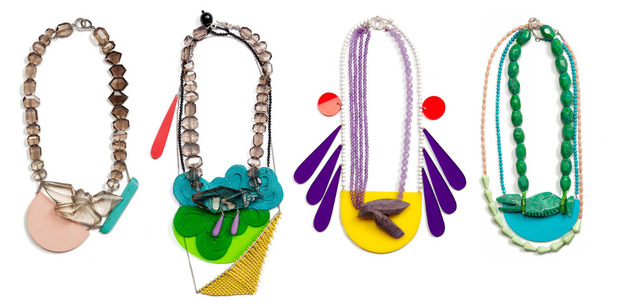
Can you tell us about your background as an artist and designer?
I like to think all of my pieces tell a story. I approach each necklace almost as an artist might approach a painting, I think about composition, color and textures. And then I try to create a snapshot of my feelings. I like to think of it as “material painting.”
When I’m creating a piece in series, rather than a unique piece, then I feel more like a designer than an artist. Working in series means that you really have to plan and manage the process in order to re-produce a piece—you can’t just make one piece and your work is finished. I wanted to make pieces in series because it makes me happy when one person falls in love with a piece and buys it, but it makes me even happier when more than one person can enjoy it!
People don’t always realize that I don’t just design pieces; I also make everything by hand.
My diploma was really interdisciplinary; I studied applied sciences and product design with a focus on jewelry design, as well as more traditional “art” subjects like art history, drawing and photography. I also studied goldsmithing so I think about myself as a craftsperson, too. I think people don’t always realize that I don’t just design pieces; I also make everything by hand. My father is a goldsmith so I’ve been in workshops since a young age, and we make all the silver fastenings for my necklaces together in Dusseldorf.
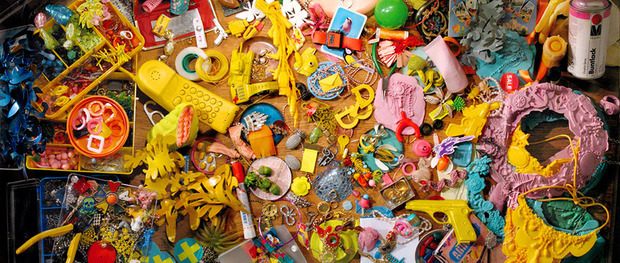
How did you fall in love with the medium of plastic?
When I was a little child, I was always enchanted by the bright colors that my plastic toys were made from. All these beautiful bright plastic toys felt precious to me, and that is something I still feel today. And then when I started designing jewelry, I knew I wanted to create colorful pieces, and plastic allows me to do this. It’s harder to get the range of colors if you use metal for example. Plastic offers me an infinite range of colors to choose from and that’s really exciting for me.
I almost don’t think of it as plastic any more—plastic has some negative connotations. For me, it’s a material that is available in so many different forms, texture and colors that I need to make my designs come to life. Casting things in plastic allows me to transform pieces—I can combine lots of different pieces and cast them all together in plastic, and unify them through color. This transformation feels almost magical, it completely changes a piece.
In the making process, does working with plastic have its own obstacles?
Of course. It’s fragile, the quality can vary if using a mold. Fragile if e.g. sewing beads through it—it can break and it’s not easy to fix.
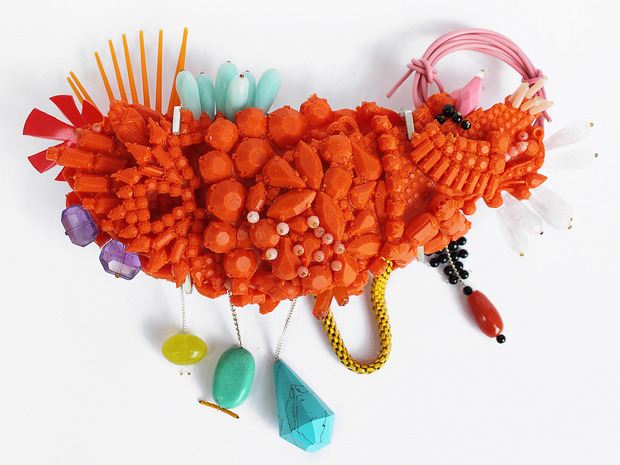
Can you walk us through the process of how you come up with a design for a necklace?
At first I have a specific idea: for example, for my “Precious Plastic” collection I had the idea of bringing together lots of beloved pieces. I always try to find a way to combine things. I made a collage first with all the pieces, then I made a mould to fix all the pieces and to bring them together in harmony. Once I’ve done that, I like to play with the color and make everything in a uniform color. It’s the transformation of all these pieces coming together and becoming unified through color that fascinates me. And then I like to experiment with combining this with other materials, such as gemstones or acrylic glass. I’m always on the lookout for different materials that I’m attracted to, and to find ways to work with them.
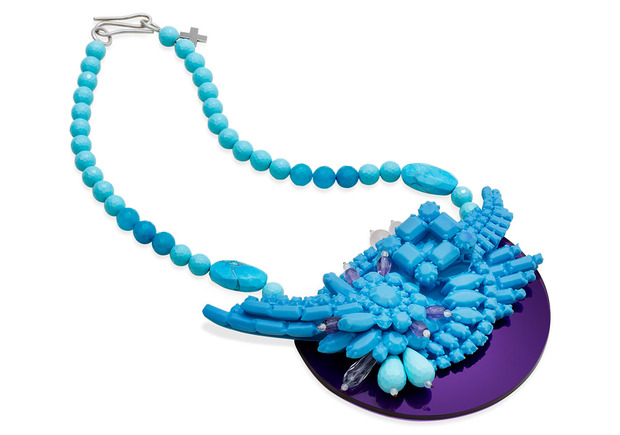
When I first started making jewelry, the creative process felt quite rigid and less intuitive. So I tried a different approach, something closer to the process when I’m painting—I collected lots of interesting pieces on a table. My table became a building site for exploration, a field that my jewelry could grow from. I selected pieces which intuitively felt right together and made a type of three-dimensional material collage, and it is this collage which you see as a finished piece of jewelry.

What’s currently on your mood board right now?
I’m inspired by a lot of things. Since I was a little child I [was] inspired by Native American, Inca and Aztecs, or Papua New Guineans. I love their way of combining colors. How they dress, decorate themselves, with flowers and colorful feathers, the wonderful headpieces! It looks magical! And these influences are always coming back to me. I remember a book when I was a child and a specific picture. But I’m also inspired by old traditional costumes.
Then of course I like looking through Instagram, blogs, design and photography websites; I’m always collecting images. Sometimes it’s a color, a feeling or a good thought that inspires me. For example, the “Timepeace” came about because I wanted people to remember what is important in life—to have fun and enjoy life.

I’m always collecting images of patterns or colors that have been combined in an interesting way. At the moment I’m really inspired by Mara Hoffman, Yvonne Kwok and Peter Pilotto—I like their styles: they have this urban ethno, colorful electric style. Combined patterns, it’s bold and happy. I’m also inspired by the way certain people express themselves, like Mademoiselle Yulia, M.I.A and Fa’velapunk. But I could just as easily have a photo of fruit or something if the colors attract me, or if it’s a beautiful photo.
Reytan’s “Precious Plastic Necklace” ($495) and “Timepeace” ($198) will be available exclusively through the MoMA Store beginning 14 August 2014, in-store and online. Reytan also has an online shop available on her website.
Image of blue Precious Plastic Necklace courtesy of MoMA Store, image with model by M Fischinger, all others courtesy of Denise J Reytan












